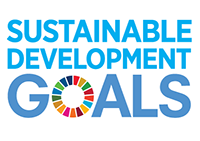Heavy Drinking
Definition:
Percent of the population (12+) who is considered a heavy drinker.
Methods and Limitations:
Heavy drinking refers to males who reported having 5 or more drinks, or women who reported having 4 or more drinks, on one occasion, at least once a month in the past year.
Data for the Canadian Community Health Survey (CCHS) are collected yearly from a sample of approximately 65,000 respondents. The Canadian Health Indicators are tabulated by sex and age group in two main tables. The table 13-10-0096-01 presents the most up-to-date population health estimates for the ten provinces and is updated yearly. The table 13-10-0113-01 presents estimates from two-year combined data and features breakdown by all provinces and territories as well as by health regions. These estimates are less current than annual estimates, but have higher precision given the larger sample (less variability). Users should refer to the annual data table 13-10-0096-01 as the primary source for the most current estimates from the survey as well as to obtain data from previous years (where available). However, where data quality flags indicate suppression (F) or higher variability (E), the two-year data table 13-10-0113-01 should be used. Health regions are administrative areas defined by provincial ministries of health according to provincial legislation. The health regions presented in this table are based on boundaries and names in effect as of 2015. For complete Canadian coverage, each northern territory represents a health region.
Due to changes in content and methodology, this table now replaces table 13-10-0452-01, which will now only be made available for historical revisions. As a result of the changes, users should use caution when comparing data in this table with the data in 13-10-0452-01.
Due to changes in content and methodology, this table now replaces table 13-10-0464-01, which will now only be made available for historical revisions. As a result of the changes, users should use caution when comparing data in this table with the data in 13-10-0464-01.
As a result of the 2015 redesign, Canadian Community Health Survey (CCHS) has a new collection strategy, a new sample design, and has undergone major content revisions. With all these factors taken together, caution should be taken when comparing data from previous cycles to data released for the 2015 cycle onwards.
The COVID-19 pandemic had major impacts on the data collection operations for Statistics Canada, Canadian Community Health Survey (CCHS) 2020. The collection was stopped mid-March, towards the end of the first collection period, and did not resume until September. The second, third and fourth quarterly samples were collected during very short collection periods, each of about five weeks, from September to December. The impossibility of conducting in-person interviews, the shorter collection periods and collection capacity issues resulted in a significant decrease in the response rates. As for previous CCHS cycles, survey weights were adjusted to minimise any potential bias that could arise from survey non-response; non-response adjustments and calibration using available auxiliary information were applied and are reflected in the survey weights provided with the data file. Extensive validations of survey estimates were also performed and examined from a bias analysis perspective. Despite these rigorous adjustments and validations, the high non-response increases the risk of a remaining bias and the magnitude with which such a bias could impact estimates produced using the survey data. Therefore, users are advised to use the CCHS 2020 data with caution, especially when creating estimates for small sub-populations or when comparing to other CCHS years.
All data are calculated excluding non-response categories (“refusal”, “don’t know”, and “not stated”) in the denominator.
Source(s):
Statistics Canada. Table 13-10-0805-01 Health characteristics, two-year period estimates, census metropolitan areas and population centres
Statistics Canada. Table 13-10-0113-01 Health characteristics, two-year period estimates

 Heavy Drinking in the Sustainable Development Goals
Heavy Drinking in the Sustainable Development Goals
Click on the SDG to reveal more information
3. Ensure healthy lives and promote well-being for all at all ages
Ensuring healthy lives and promoting the well-being for all at all ages is essential to sustainable development. Significant strides have been made in increasing life expectancy and reducing some of the common killers associated with child and maternal mortality. Major progress has been made on increasing access to clean water and sanitation, reducing malaria, tuberculosis, polio and the spread of HIV/AIDS. However, many more efforts are needed to fully eradicate a wide range of diseases and address many different persistent and emerging health issues.
Related Heavy Drinking Targets
Strengthen the prevention and treatment of substance abuse, including narcotic drug abuse and harmful use of alcohol

